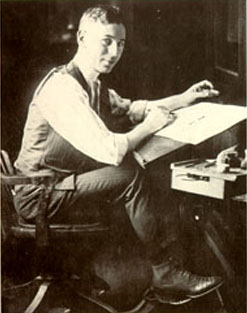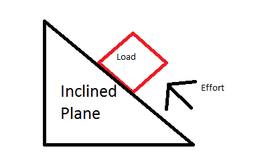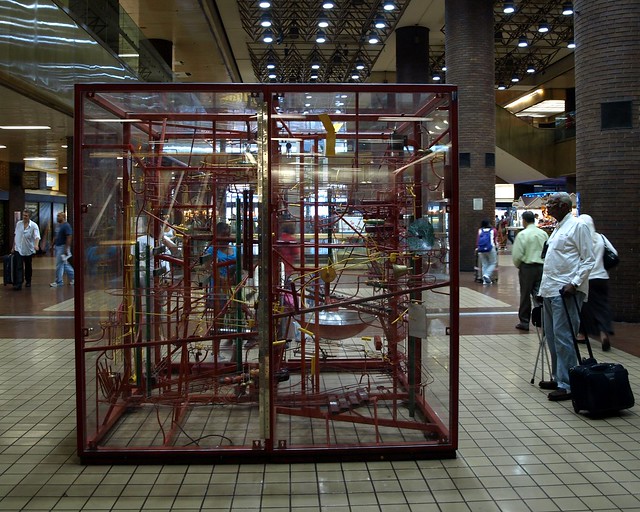 Rube Goldberg was born July 4, 1883 in San Francisco. He was a smart child and grew up to be an inventor, sculptor, engineer, author and cartoonist. He enjoyed drawing and creating things. He graduated from Lowell High school in San Francisco in 1900. As an adult, he made cartoon strips and invented things. He won many awards and was known around the world. He died on December 7th, 1970.
Rube Goldberg was born July 4, 1883 in San Francisco. He was a smart child and grew up to be an inventor, sculptor, engineer, author and cartoonist. He enjoyed drawing and creating things. He graduated from Lowell High school in San Francisco in 1900. As an adult, he made cartoon strips and invented things. He won many awards and was known around the world. He died on December 7th, 1970. 1.) Pulley- A pulley is a simple machine that uses grooved wheels and a rope to raise, lower or move a load weight x mass
2.) Lever- A lever is a stiff bar that rests on a support called a fulcrum which lifts or moves loads
3.) Wedge- A wedge is an object with at least one slanting side ending in a sharp edge, which cuts material apart
4.) Wheel & Axle- A wheel with a rod, called an axle, through its center lifts or moves loads
5.) Inclined Plane- An inclined plane is a slanting surface connecting a lower level to a higher level.
6.) Screw- A screw is an inclined plane wrapped around a pole which holds things together or lifts materials
Pulley

Lever

Wedge

Wheel & Axle
Inclined Plane
Screw






